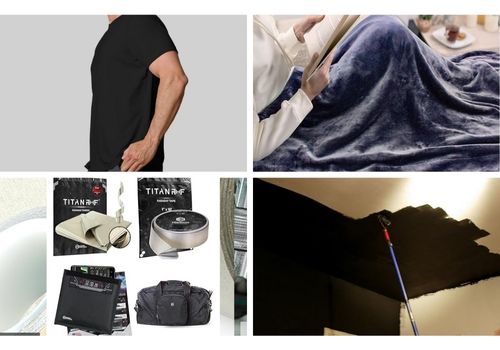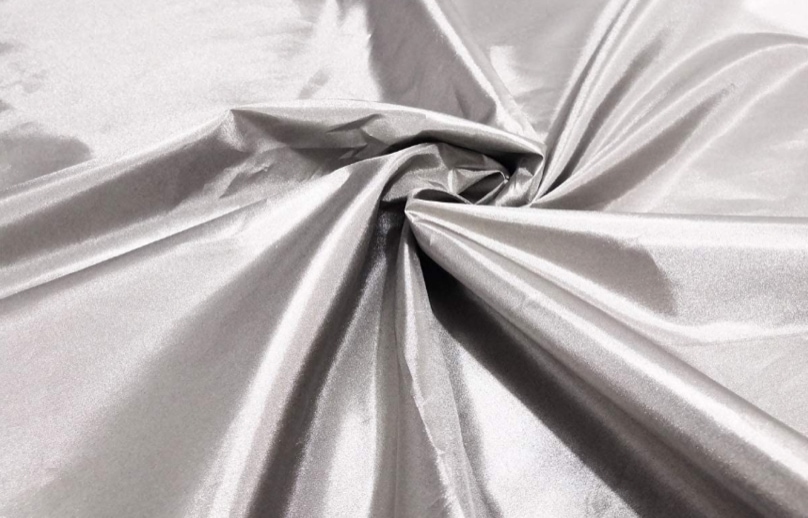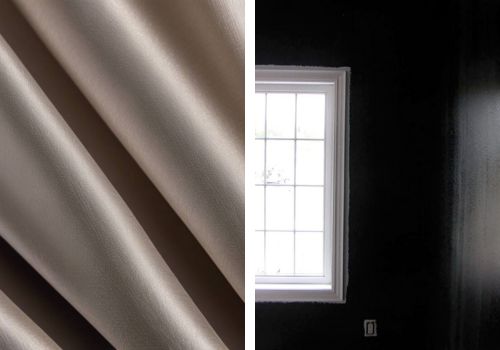After spending years testing various EMF protection solutions with controlled conditions, I’ve seen some eye-opening results. Did you know some aluminum foil actually works better than some claimed to be EMF blocking fabrics?
I’ve learned that choosing the right shielding material can make or break your EMF protection strategy. Here’s what I’ve discovered about these fascinating materials, how they work, and which actually work.

Understanding EMF Shielding Basics
Electromagnetic field (EMF) shielding isn’t just about blocking signals – it’s about creating an effective barrier that can attenuate various types of electromagnetic radiation. While researching solutions for my own home office, I discovered that different materials offer varying levels of protection against specific frequency ranges.
The physics behind EMF shielding is actually quite fascinating. When electromagnetic waves encounter a conductive material, they generate electrical currents within that material, which then create their own electromagnetic fields that oppose the incoming radiation.
Types of EMF Shielding Materials
In my experience, there’s no one-size-fits-all solution when it comes to EMF protection. Each material has its own strengths and ideal applications. So you want to ensure you’re using the right material for the correct purpose in your home, office or for your body.
When comparing permanent versus removable solutions, I’ve found that the choice between conductive paints and specialized fabrics often depends on your specific situation.
Let me break down what I’ve learned about each category and share some real-world insights about their effectiveness.
Metal-Based Solutions
Traditional metal shielding using copper, aluminum, and steel remains some of the most effective EMF shielding materials available.
- Copper, while expensive, is an excellent conductor, blocking electric and magnetic fields very well. You’ll find it in Mission Darkness’ Titan RF Fabric within all their bags and pouches.
- Aluminum is cost effective with excellent protection against high frequency radiation. It’s flexible and light so it can easily be woven into EMF blocking fabrics and it’s extremely effective at absorbing and dispersing electromagnetic waves.
- Steel, in particular a nickel-iron alloy, excels at blocking low-frequency magnetic fields (like power lines, appliances, dirty electricity, etc.)
Fabric-Based Protection
Conductive fabrics have come a long way in recent years. During my testing of various materials, I’ve found that some of the latest radiation-blocking textiles can block over 99% of EMF radiation while remaining comfortable and practical for daily use. They contain interwoven metal fibers (usually silver, copper, and/or stainless steel) along with traditional fibers.
One particularly interesting application I’ve researched extensively is protective clothing. After trying numerous brands, I was particularly impressed with HAVN’s innovative designs, which manage to balance protection with style and comfort.
Household and Office Applications
For bedroom protection, I’ve found that protective canopy systems over my bed can create an effective sanctuary (or EMF free bubble) for sleep. In my living spaces, I’ve had success using specialized window curtains to reduce EMF exposure from external sources.
Specialized Paints and Coatings
EMF shielding paints are incredibly versatile. These specialized coatings contain conductive materials (usually carbon or metallic particles) suspended in a water-based acrylic solution. What I particularly appreciate about this solution is its ability to provide comprehensive coverage without changing a room’s aesthetics significantly.
I’ve also had success with conductive wallpapers, which offer similar protection levels while providing more aesthetic options. It’s really awesome to see how far these wallpapers have come and you’d have no idea where they’re being applied.
In my experience testing both options, the choice often comes down to your specific needs, budget, and installation preferences.
Composite Materials
Composite shielding materials have revolutionized how we approach EMF protection. These materials combine multiple elements to create solutions that often outperform single-material options. I’ve worked with composites that layer different metals and combine conductive materials with traditional building materials.
Effectiveness and Properties
Through my testing, I’ve observed that effectiveness varies significantly between materials. Effective EMF protective clothes typically provide 20-60 dB of attenuation across a wide frequency range.
For permanent solutions, I’ve found that high-quality shielding paints can offer outstanding protection when properly applied. The key factors I look for include:
- Attenuation levels across different frequencies
- Durability and longevity
- Ease of application
- Cost-effectiveness over time
- Environmental impact
Implementation and Installation
Installation techniques can dramatically affect the performance of any shielding material. Here are some crucial lessons I’ve learned:
Surface Preparation
- Always clean surfaces thoroughly
- Address any moisture issues before application
- Test conductivity of existing surfaces
- Use appropriate primers when needed
Common Installation Mistakes
- Inadequate surface preparation
- Gaps in coverage
- Improper grounding
- Insufficient layers
- Using incompatible materials together
Testing and Verification
Proper testing is crucial for ensuring effective protection. I recommend:
- Using calibrated EMF meters
- Testing before and after installation
- Regular monitoring over time
- Documenting results for comparison
Health and Environmental Considerations
When selecting materials, consider:
- VOC emissions from paints and coatings
- Recyclability of materials
- Long-term degradation effects
- Potential health impacts of materials
Practical Applications
Different environments require different approaches:
Home Applications
- Bedrooms: Shielding canopies and fabrics
- Living spaces: Paint or wallpaper
- Windows: Specialized curtains or films
Professional Environments
- Medical facilities: High-performance composites
- Data centers: Comprehensive shielding systems
- Research laboratories: Precision shielding solutions
Maintenance and Long-Term Care
To ensure lasting protection:
- Regular testing of shielding effectiveness
- Proper cleaning of conductive surfaces
- Immediate repair of any damage
- Periodic grounding system checks
Conclusion
After years of testing and implementing various EMF shielding solutions, I’ve found that success lies in choosing the right material for your specific situation and ensuring proper installation. While the initial choices might seem overwhelming, understanding the basic principles and properties of different materials makes the selection process much more manageable.
Remember that EMF protection isn’t just about choosing the right materials – it’s about creating a comprehensive strategy that addresses your specific concerns and requirements. Whether you’re protecting a single room or an entire building, taking the time to understand your options will lead to more effective implementation.


